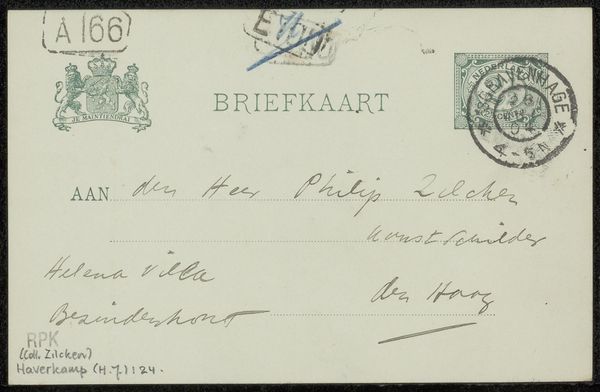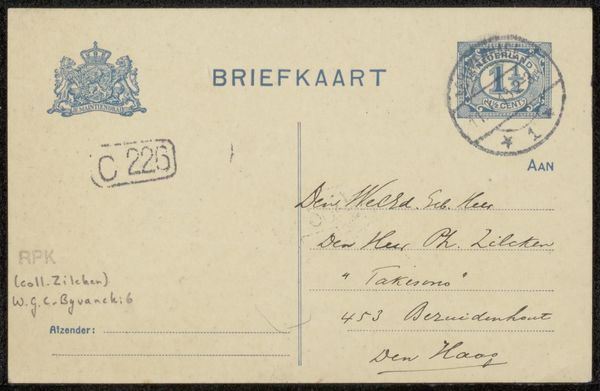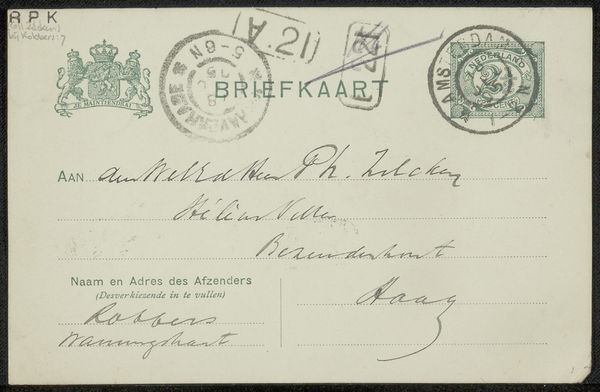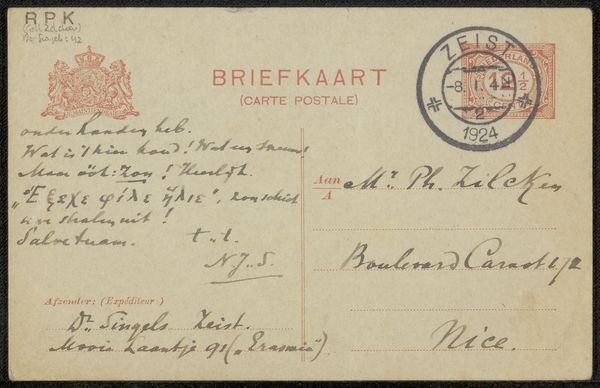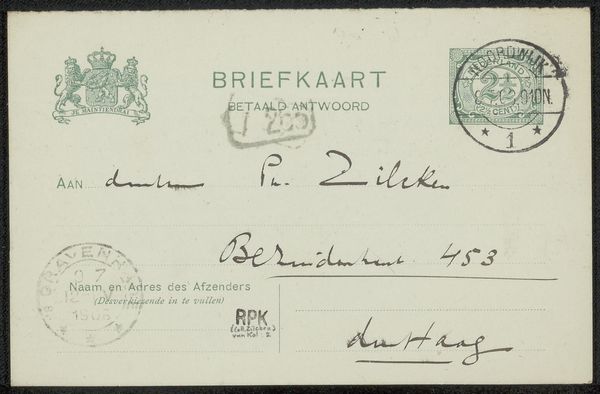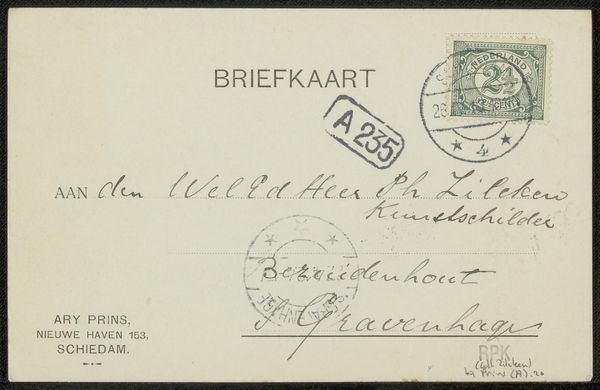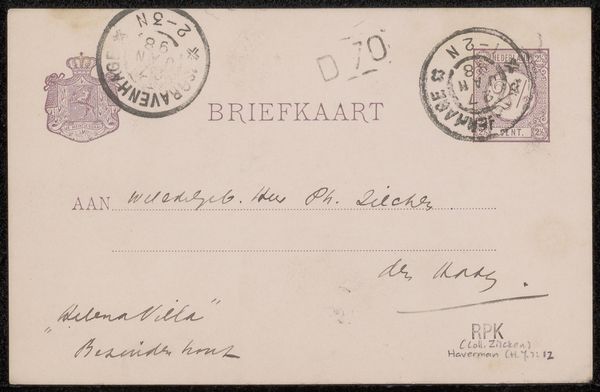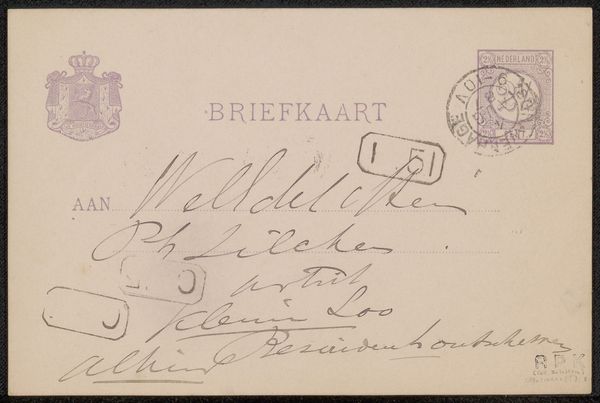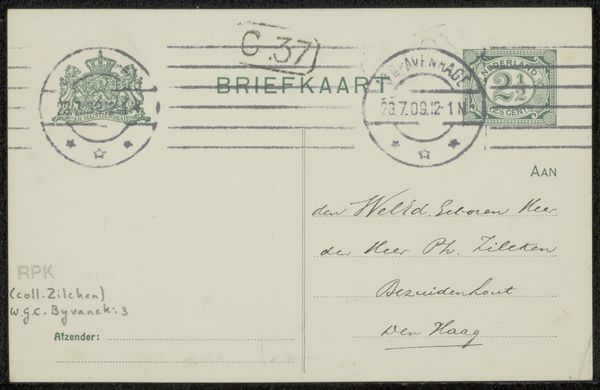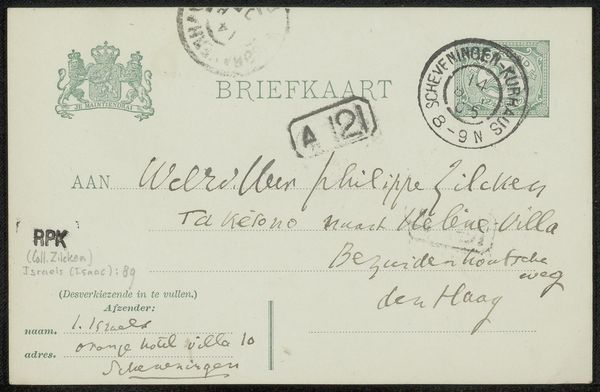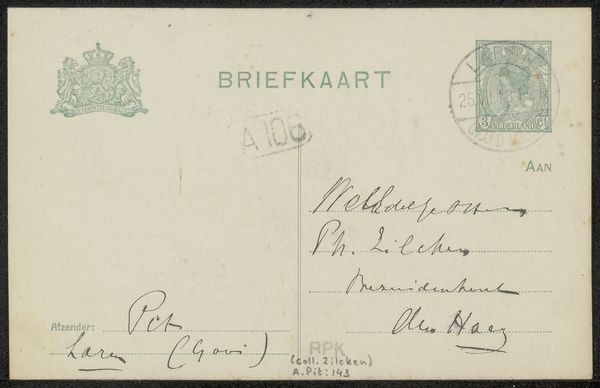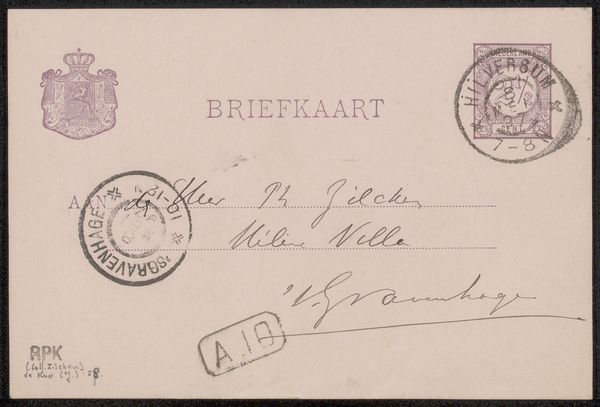
drawing, print, paper, ink
#
drawing
#
comic strip sketch
# print
#
pen illustration
#
hand drawn type
#
paper
#
personal sketchbook
#
ink
#
ink drawing experimentation
#
pen-ink sketch
#
pen work
#
sketchbook drawing
#
storyboard and sketchbook work
#
sketchbook art
#
calligraphy
Copyright: Rijks Museum: Open Domain
Curator: Here we have Theo van Hoytema’s “Briefkaart aan Philip Zilcken,” believed to be created before 1915. It's a rather unassuming piece; a humble postcard composed with ink on paper. Editor: There’s a strange intimacy to holding a discarded message—almost like eavesdropping. Even without deciphering the words, the stamps and script tell stories of place and time, hinting at a world in flux. Curator: Precisely! The stamps, the hand-drawn text itself… these are potent symbols of a bygone postal system and social interaction. The overall feel harkens to a world dependent on physical missives, where personal connections took on an additional performative layer. Editor: That’s interesting because the materiality amplifies this notion of personhood as an object that traverses different distances, perhaps to signify emotional vulnerability, particularly if this postcard contains sentimental confessions. Did Hoytema intentionally employ calligraphy to elevate the personal, maybe as a critique of standardized modes of bureaucratic communication? Curator: Hoytema’s hand transforms a mundane object into something deeply personal. Calligraphy itself represents centuries of tradition, discipline, and refined expression. Each stroke of the pen can carry the weight of history and cultural significance, while adding nuance to the text that machine printing simply cannot replicate. Editor: Agreed. We could also contextualize Zilcken, the receiver, as possibly a member of an elite social circle given that handwriting suggested elevated social standing. Was Hoytema performing access through visual craft? Who benefited most from such systems of messaging? I suspect class divisions are subtly embedded here. Curator: It is open to interpretation, isn't it? It makes one wonder, in our current world of instant digital messaging, what symbols will be imbued into our devices and modes of exchange? How will future generations decode them, searching for meaning in the remnants of our analog existence? Editor: Indeed, by tracing Hoytema’s inky lines we not only encounter a relic of communication history, but are also prompted to question our current communication modes that reinforce structural inequalities. Thanks to this brief interaction, I can say that postcards will never appear so straightforward.
Comments
No comments
Be the first to comment and join the conversation on the ultimate creative platform.
